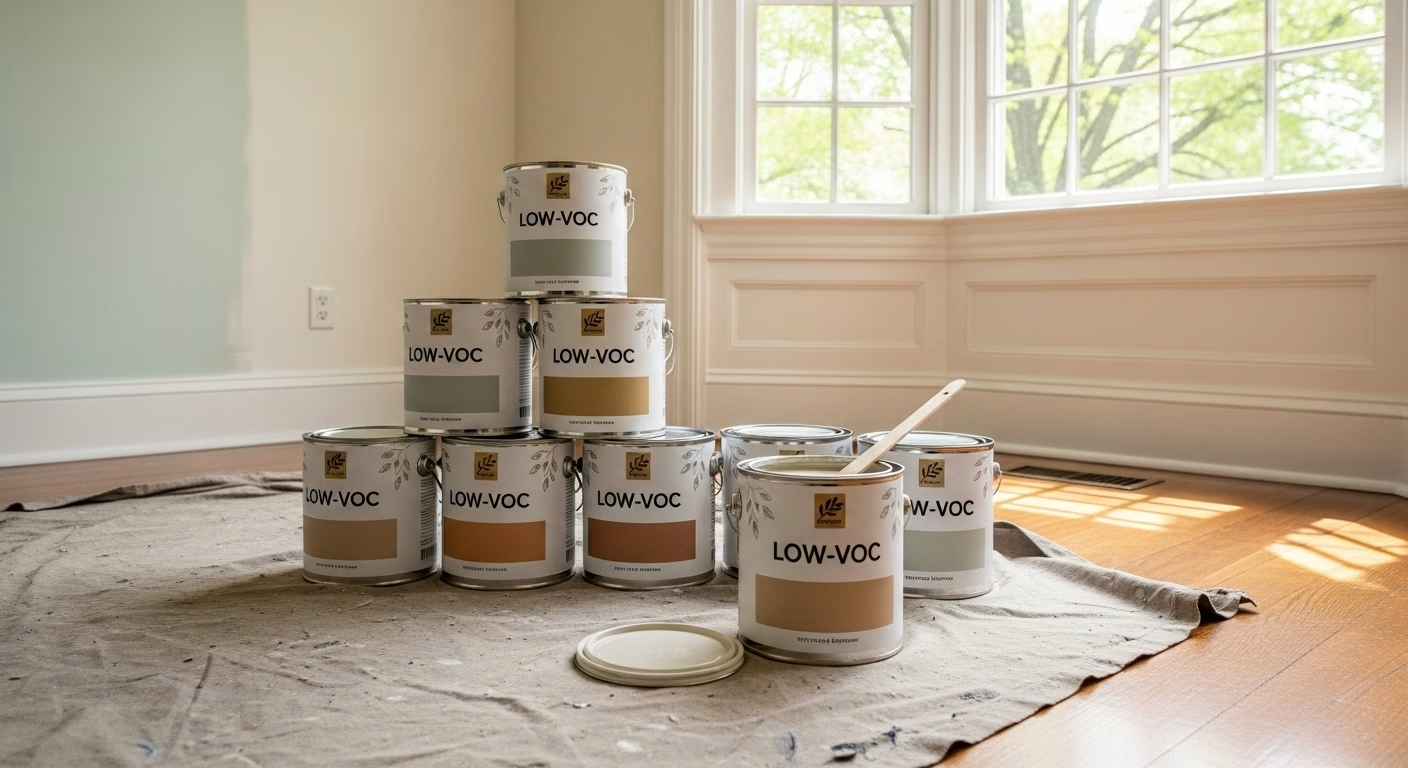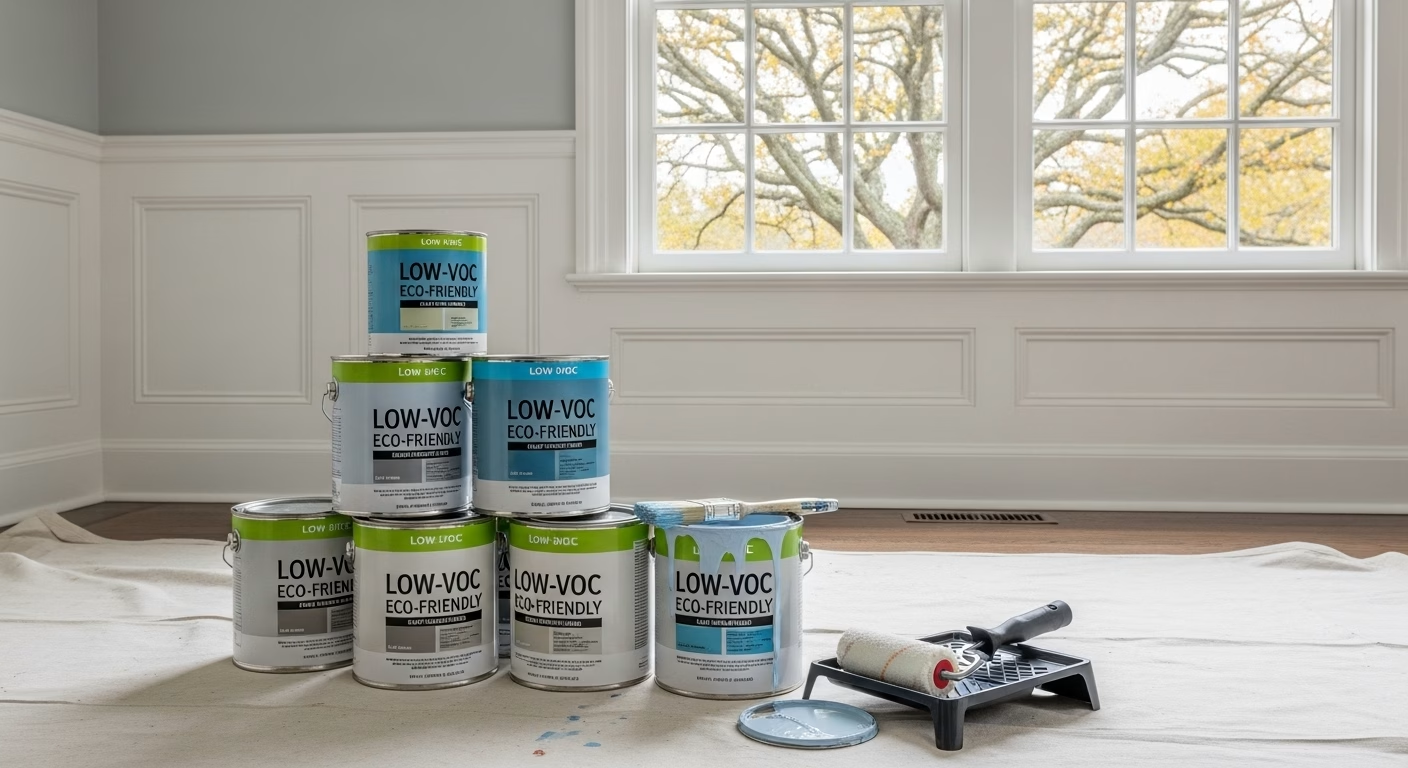Eco-Friendly Painting: How to Choose Low-VOC Paints
When it comes to sustainable home improvement, choosing eco-friendly low-VOC paints is a smart move. These paints release fewer volatile organic compounds (VOCs), which are harmful chemicals that contribute to air pollution and health problems. Whether you’re repainting a room or renovating your entire home, using low-VOC paints helps protect your indoor air quality and supports a greener planet.



Why Choose Eco-Friendly Low-VOC Paints?
Health Benefits
Low-VOC paints help avoid common health problems like headaches, dizziness, allergies, and asthma symptoms. VOCs can be up to 10 times more concentrated indoors than outdoors, according to the U.S. Environmental Protection Agency (EPA).
Better Air Quality
Using low-VOC or zero-VOC paints improves indoor air quality, making your living space safer and more comfortable—especially for children, pets, and sensitive individuals.
Environmental Impact
Traditional paints contribute to smog and water contamination. Eco-friendly paints reduce emissions and help lower your carbon footprint.
How to Choose the Right Paint
Check for Certifications
Look for the Green Seal or GREENGUARD labels.
Know the VOC Limit
In the U.S., low-VOC paints typically contain less than 50 grams per liter (g/L) for flat finishes.
Read the Label
Claims like “zero-VOC” are common, but always verify the VOC content.
U.S. VOC Regulations
VOC content in paints sold in the U.S. is regulated by the EPA and local authorities such as CARB (California Air Resources Board) and SCAQMD (South Coast Air Quality Management District), not the 2012 UK regulation. These standards help ensure safer products for both consumers and the environment.
Looking for professional advice or a flawless finish?
Contact Tri-State Painting today and let our experts help you choose the perfect look for every room.
